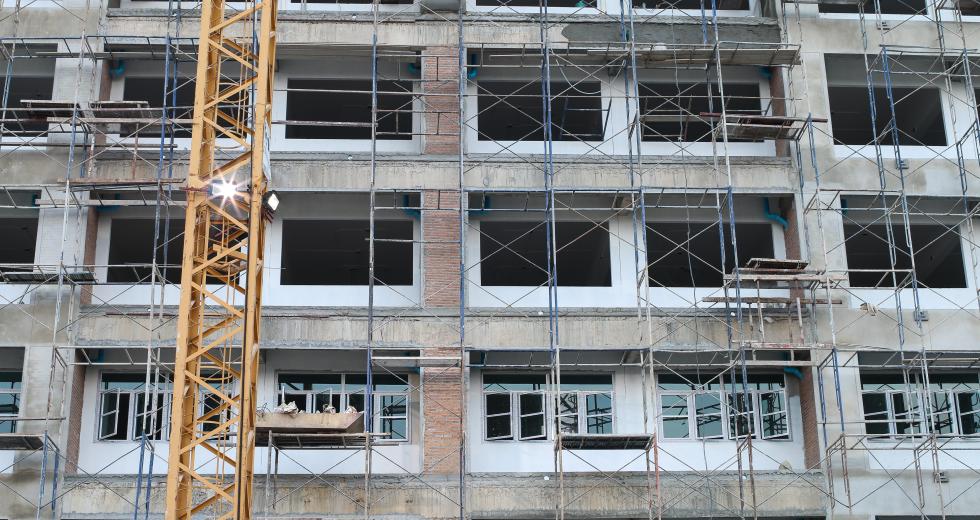Californians in November will weigh billions of dollars’ worth of ballot measures for low-income housing, children’s hospitals and more. But one of the biggest asks will be mostly invisible to most voters—100 or more local proposals to sell bonds for school construction projects that, if passed, could total more than $12 billion in local borrowing in coming years.
About 90 school districts across the state have construction bond measures on the Nov. 6 ballot, asking local voters to approve borrowing for projects from security upgrades in the wake of the Parkland, Fla., mass shooting to air conditioning to the removal of lead from school drinking water. Another 13 districts are asking voters for harder-to-pass parcel taxes, which require a two-thirds majority for approval, and which total about $43 million.
The requests are fewer than in the 2016 general election, when more than 180 school bond measures were on local ballots, but still a hefty reflection of the ongoing need to repair and renovate aging public schools in California. Though the state spends more of its general fund on K-12 education than any other line item—$11,639 per student this year—that money is just for the classroom, and can’t be used for capital projects.
Meanwhile, a UC Berkeley study in 2012 put the statewide backlog of needed repairs and renovations at $117 billion over the next decade.
As a result, local bond measures have proliferated, particularly since 2000, when voters lowered the threshold for approval of school bonds to 55 percent, rather than the two-thirds supermajority that had been the requirement. Repaid from property tax increases in the local district, local school bond measures typically pass at high rates.
Voters approved all but five of the 35 school bond measures in the June 5 primary, according to data from the California State Treasurer’s Office. Since 2012, 86 percent of bond measures introduced by school districts have passed in California. Those bonds have totaled more than $45 billion, state data show.
This year’s measures run the gamut, though most concentrate on the basics—heating, cooling, leaky roofs.
Salida Union School District, north of Modesto, for instance, is asking for a $2.5 million bond partly to construct secure school entrances, exits and fencing as part of its school safety plan, as well as classroom renovations and repairs to leaky plumbing.
The Lowell Joint School District in Los Angeles County is asking its voters to approve a $48 million bond that would partly repair termite damage, dry rot and deteriorating roofs in its six schools.
Palo Alto Unified School District is proposing a $460 million bond to upgrade aging classrooms, libraries and science labs and make improvements in school security and accessibility for students with disabilities.
And Bonsall Unified School District in San Diego County plans to build a new high school and replace its schools’ track and field facilities with a proposed $38 million bond.
Despite new requirements that districts specify how they will spend bond proceeds, most of the measures are worded in ways that maximize the flexibility of the money and the appeal to the public, reflecting the cottage industry of consultants school bonds have spawned.
At least 50 school district bond measures have ballot wording—some of them share exact phrasing—that explicitly states the bond funding would go toward improving schools’ safety and security systems.
Richard Michael, a Southern California bond watchdog whose California School Bonds Clearinghouse comprehensively tracks school bond measures, said one of his criticisms of school bond measures is that their ballot statements do not specify exactly how much money districts plan to devote to each of their proposed causes.
Michael said school safety has become “a hot-button” issue for voters following recent, tragic school shooting incidents and believes the reason so many districts cite safety and security in their bond proposals is that it helps appeal to voters.
“That to me is just a predatory tactic by people who want to get something passed,” Michael said. “Many of these schools have had safety (and security projects) on their previous bond measures.”
State law requires school districts that have passed bond measures to form local, volunteer oversight groups to monitor how they spend bond dollars through public meetings.
While voters approved $9 billion to fund a statewide school bond finance program in 2016—the first statewide bond to be approved in a decade—local measures remain a major source of funding for capital and facilities expenses such as school construction and renovation and technology.
The statewide bond program gives additional incentive for schools to try passing local bonds because of how the money is doled out: The state matches funds with school districts on a first come, first served basis and matches for new school facilities and renovations and repairs.
Critics of that system say it favors wealthier school districts that have the bonding capacity to raise more money and specialized staff to navigate the cumbersome application process. Districts that have applied, meanwhile, complain that the state has released only a fraction those matching funds.
CALmatters.org is a nonprofit, nonpartisan media venture explaining California policies and politics.



